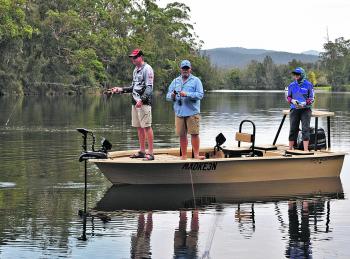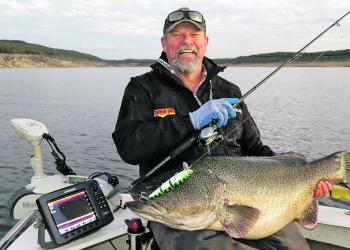Those who’ve never used them sometimes look askance at the expensive electric motors mounted on other angler’s vessels and ask what the point is in owning one. In the first of a two-part series on the benefits of using electric motors, let’s answer that important question.
The level of ownership of electric motors amongst Aussie boat fishers has increased dramatically over the past decade or two. These days, many of us who live for our lure and fly fishing would rather leave our favourite rod and reel at home, or even give up our depth sounder, than be caught without a functioning ’lecky, as these wonderful devices are commonly known.
This certainly hasn’t always been the case. Not so many years ago, I could judge how lightly-fished and remote a destination might be by the number of questions I fielded about the electric motor mounted on the bow of my trailer boat. If I stopped at a campsite or pulled into a servo for fuel and someone wandered over to quizzically check out the ’lecky, I knew I was getting off the beaten track.
“Hey mate,” their query usually began, “what’s that weird lookin’ contraption on the front of ya boat? Is it a spare motor in case ya break down? Or some kinda anchor?”
Perhaps a little sadly, there are now very few corners of our big country left that haven’t seen at least a handful of boats sporting electric motors (sometimes referred to as “trolling motors” in American literature), and those wide-eyed questions and quizzical looks come far less regularly today.
Electric motors take two basic forms. The earliest versions simply clamped to the transom of a boat right alongside the outboard (or in place of it) and were used to propel the vessel in much the same manner as a standard petrol donk, albeit more slowly, but with considerably greater stealth. Transom mounted electrics are still available, and remain reasonably popular amongst the owners of lightweight car toppers, folding boats, big Canadian-style canoes and even kayaks. However, it’s the more sophisticated bow-mounted versions of the electric motor that have really transformed our day-to-day fishing.
Folded up onto the foredeck when travelling, these units are easily deployed once the vessel reaches the fishing area and used to quietly manoeuvre about while casting or slow trolling. As well as being whisper quiet, they allow pin-point placement of the boat. The best of them have cable or wireless foot or hand controls and some even feature a GPS interface that allows them to hold the boat in a fixed position against wind and tide, or track along a designated path at the operator’s chosen speed. Until you’ve experienced the magic carpet ride provided by a modern bow-mounted electric motor, it’s hard to believe just how much difference it can actually make to your fishing.
Of course, the downside to these tools is their need for an on-board power source. This typically takes the form of one, two or even three big, heavy deep-cycle marine batteries with ratings of at least 100 amp hours. You’ll need to be able to recharge these batteries, too, which can be problematic out in the bush. Happily, the advent of portable generators, reliable solar panels and vehicles fitted with dual battery systems has helped in this regard, but there’s nothing quite like being able to plug a charger into mains power overnight to re-juice those tired batteries. This mightn’t always be possible out in the back blocks, but with careful use, most bow-mounted electrics can provide up to three days of low speed manoeuvring work from a full charge. The fishing benefits associated with this sort of stealthy mobility simply can’t be overstated.
There are several brands of electric on the market these days and you tend to get what you pay for. The best of them aren’t cheap. They also need a little more TLC than your average outboard. A good wash down with freshwater after use in the salt is essential, and it pays to protect them as much as possible from dust and excessive vibration. That typically means removing and storing the unit while towing your rig over rough dirt tracks. Luckily, most have quick-release mounting plates.
An electric motor might not currently be at top of your fishing gear wish list… but perhaps it should be!
Reads: 2898
Bow-mounted electric motors have radically altered the way we fish from boats, especially when casting lures or flies.

Bream fishing is so much easier when you have a ’lecky! That’s iconic Aussie actor and comedian Garry McDonald (aka Norman Gunston) with a hefty bream he finessed from the shallows on a hardbodied minnow.

You don’t need to own a big, flash bass boat to benefit from using a bow-mounted electric motor!

The combination of electric motors and sophisticated sounders has radically evolved our fishing. Some say it’s unfair to the fish… The author reckons we need all the help we can get!




